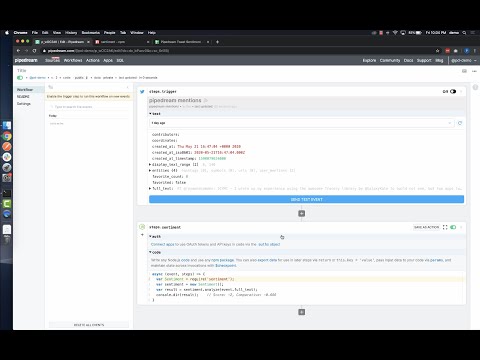What do you want to automate
with Google Sheets and PostHog?
Prompt, edit and deploy AI agents that connect to Google Sheets, PostHog and 3,000+ other apps in seconds.
Trusted by 1,000,000+ developers from startups to Fortune 500 companies
Popular Ways to Connect Google Sheets with PostHog#
Popular Google Sheets and PostHog Triggers#
Emit new event when an action is performed in a project. See the documentation
Emit new event each time a comment is added to a spreadsheet.
Emit new event each time a row or rows are added to the bottom of a spreadsheet.
Emit new event each time a row or rows are added to the bottom of a spreadsheet.
Popular Google Sheets and PostHog Actions#
Add a single row of data to Google Sheets. See the documentation
Captures a given event within the PostHog system. See the documentation
Add multiple rows of data to a Google Sheet. See the documentation
Get all values or values from a range of cells using A1 notation. See the documentation
Overview of Google Sheets#
The Google Sheets API allows for the creation, reading, updating, and deletion of data within Google Sheets, enabling a robust platform for spreadsheet management and data manipulation. Through Pipedream, you can craft serverless workflows that respond to various triggers, such as webhook events, emails, or scheduled times, to interact with Google Sheets. This synergy can automate reporting, synchronize data across applications, manage inventory, track leads in a CRM, or even conduct survey analysis by updating and retrieving sheet data on the fly.
Connect Google Sheets#
import { axios } from "@pipedream/platform"
export default defineComponent({
props: {
google_sheets: {
type: "app",
app: "google_sheets",
}
},
async run({steps, $}) {
return await axios($, {
url: `https://www.googleapis.com/oauth2/v1/userinfo`,
headers: {
Authorization: `Bearer ${this.google_sheets.$auth.oauth_access_token}`,
},
})
},
})
Overview of PostHog#
The PostHog API lets you track events, update user properties, and extract analytics to understand user behavior within your applications. Integrating this API into Pipedream workflows allows you to automate actions based on event data, sync user properties across platforms, and trigger alerts or notifications.
Connect PostHog#
import { axios } from "@pipedream/platform"
export default defineComponent({
props: {
posthog: {
type: "app",
app: "posthog",
}
},
async run({steps, $}) {
return await axios($, {
url: `https:///${this.posthog.$auth.instance_url}/api/users/@me/`,
headers: {
Authorization: `Bearer ${this.posthog.$auth.api_key}`,
},
})
},
})
Related Videos#



Community Posts#


